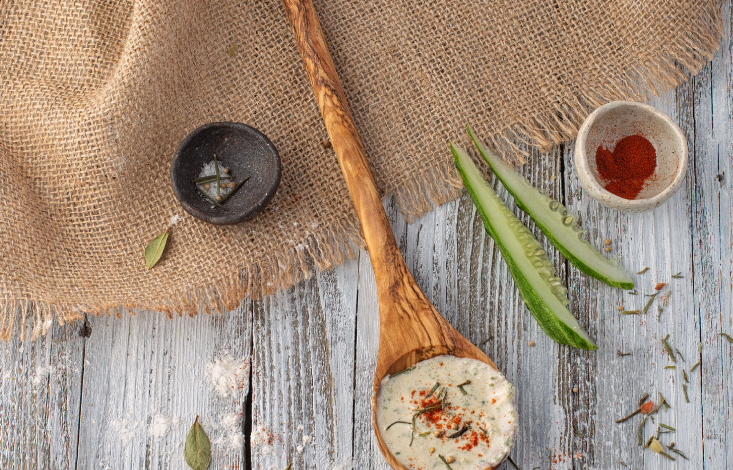How to Remove Stains and Smells from Wooden Spoons

Wooden spoons are a beloved staple in many kitchens, prized for their durability and ability to withstand heat while stirring pots and pans. However, over time, they can become stained and carry unpleasant odors, especially if they’ve been used for cooking strong-smelling or colorful foods. Fortunately, with a bit of care and the right techniques, you can restore your wooden spoons to their original glory. This guide will provide you with effective methods to remove stains and smells from wooden spoons, ensuring they remain not only functional but also looking and smelling fresh.
Understanding the Nature of Wood
Before delving into cleaning methods, it’s essential to understand why wooden spoons can stain and retain odors. Wood is a porous material, meaning it can absorb liquids, oils, and odors over time. Ingredients like tomato sauce, garlic, and certain spices can leave lasting marks or scents if not cleaned properly.
Moreover, wood is sensitive to moisture and heat. Using harsh chemicals or soaking wooden utensils can lead to warping or cracking. Therefore, it’s crucial to approach the cleaning of wooden spoons with gentleness, using natural methods whenever possible.
Everyday Cleaning Routine
- Immediate Rinse: After using a wooden spoon, rinse it immediately with warm water. Avoid soaking it in water, as prolonged exposure can damage the wood.
- Mild Soap Wash: Use a small amount of mild dish soap on a soft sponge or cloth to clean the spoon. Gently scrub all surfaces, focusing on areas where food may have adhered. Rinse thoroughly with warm water.
- Drying: After washing, dry the spoon immediately with a clean towel. Avoid air-drying, which can cause the wood to warp or develop a cloudy appearance.
Dealing with Stains
For stubborn stains that won’t come out with regular washing, consider the following methods:
1. Baking Soda Paste
Baking soda is a gentle abrasive and a natural deodorizer.
How to Use:
- Mix a tablespoon of baking soda with a few drops of water to create a thick paste.
- Apply the paste to the stained areas of the wooden spoon using a soft cloth or sponge.
- Gently scrub in a circular motion for a few minutes.
- Rinse the spoon thoroughly with warm water and dry it.
2. Vinegar and Olive Oil
Vinegar can help remove stains while olive oil conditions the wood.
How to Use:
- Combine equal parts of white vinegar and olive oil in a bowl.
- Dip a soft cloth into the mixture and use it to rub the stained areas.
- Let it sit for about 5-10 minutes.
- Rinse with warm water and dry immediately.
3. Lemon Juice and Salt
Lemon juice not only helps to bleach out stains but also leaves a fresh scent.
How to Use:
- Sprinkle coarse salt on the stained area of the spoon.
- Squeeze fresh lemon juice over the salt.
- Use half of the lemon to scrub the mixture over the stain, using the salt as an abrasive.
- Let it sit for about 10 minutes before rinsing with warm water and drying.
4. Hydrogen Peroxide
For tough stains, hydrogen peroxide can be an effective solution.
How to Use:
- Dampen a cloth or sponge with hydrogen peroxide and apply it directly to the stain.
- Let it sit for about 5-10 minutes.
- Rinse thoroughly with warm water and dry immediately.
5. Sanding (Last Resort)
If all else fails and the stain remains, gentle sanding may be necessary. This should be a last resort, as it alters the wood’s surface.
How to Use:
- Use fine-grit sandpaper (220-grit or higher) to lightly sand the stained area.
- Sand with the grain of the wood to avoid scratches.
- Wipe away dust with a damp cloth, then allow it to dry completely.
Removing Odors
In addition to stains, wooden spoons can also absorb odors. Here are some effective methods to eliminate these smells:
1. Soaking in Vinegar
Vinegar is known for its odor-neutralizing properties.
How to Use:
- Fill a bowl with equal parts water and white vinegar.
- Submerge the wooden spoon in the solution for about 10-15 minutes.
- Rinse thoroughly with warm water and dry.
2. Baking Soda Deodorizer
Baking soda is another powerful deodorizer.
How to Use:
- Sprinkle baking soda on the spoon and let it sit for at least 15-30 minutes.
- Rinse with warm water and dry.
3. Activated Charcoal
Activated charcoal is highly absorbent and can help eliminate odors.
How to Use:
- Place the wooden spoon in a bag or container with activated charcoal overnight.
- The charcoal will absorb any lingering smells.
4. Sunlight Exposure
Natural sunlight can help eliminate odors and freshen your wooden utensils.
How to Use:
- Place the clean, dry wooden spoon outside in direct sunlight for a few hours.
- The sun’s UV rays can help kill odor-causing bacteria and leave the spoon smelling fresh.
Regular Maintenance Tips
To keep your wooden spoons in good condition and prevent future stains and odors, consider these maintenance tips:
1. Oil Your Spoons
Applying mineral oil or food-safe wood oil every few months helps keep the wood hydrated and resistant to stains and odors.
How to Use:
- Clean and dry the spoon thoroughly.
- Apply a thin layer of mineral oil to the spoon using a soft cloth.
- Let it sit for a few hours or overnight before wiping off any excess oil.
2. Avoid Harsh Chemicals
Steer clear of bleach, strong detergents, and abrasive cleaners, as they can damage the wood and affect its appearance and functionality.
3. Use Separate Spoons for Strong Flavors
If you regularly cook with strong flavors (like garlic, onions, or spices), consider designating specific wooden spoons for these ingredients to avoid cross-contamination of flavors and smells.
4. Store Properly
Store your wooden spoons in a way that minimizes exposure to moisture and heat. Avoid leaving them in the sink or soaking in water, as this can warp the wood. Instead, keep them in a utensil holder or drawer.
Purchasing Wooden Utensils Online
When it comes to enhancing your kitchen with wooden utensils, shopping online offers convenience and a vast selection. Numerous retailers specialize in high-quality wooden kitchenware, ensuring you can find spoons, spatulas, and cutting boards made from various woods like maple, cherry, or bamboo. Before making a purchase, consider the quality of the wood, its durability, and any eco-friendly certifications. Reading customer reviews can also provide insight into the product’s performance and longevity. Plus, many online stores offer competitive prices and seasonal sales, making it easier to stock your kitchen with the best wooden utensils while saving money.
Conclusion
With proper care and maintenance, your wooden spoons can remain beautiful and functional for years to come. Regularly cleaning, removing stains, and addressing odors will ensure they stay a treasured part of your kitchen. By incorporating these techniques into your kitchen routine, you’ll not only enhance the lifespan of your wooden utensils but also enjoy the pleasures of cooking with tools that are both effective and aesthetically pleasing. Embrace the natural charm of wooden spoons and keep them in excellent condition with these simple yet effective cleaning strategies!
Click this website: atnews.co.uk for more information!




